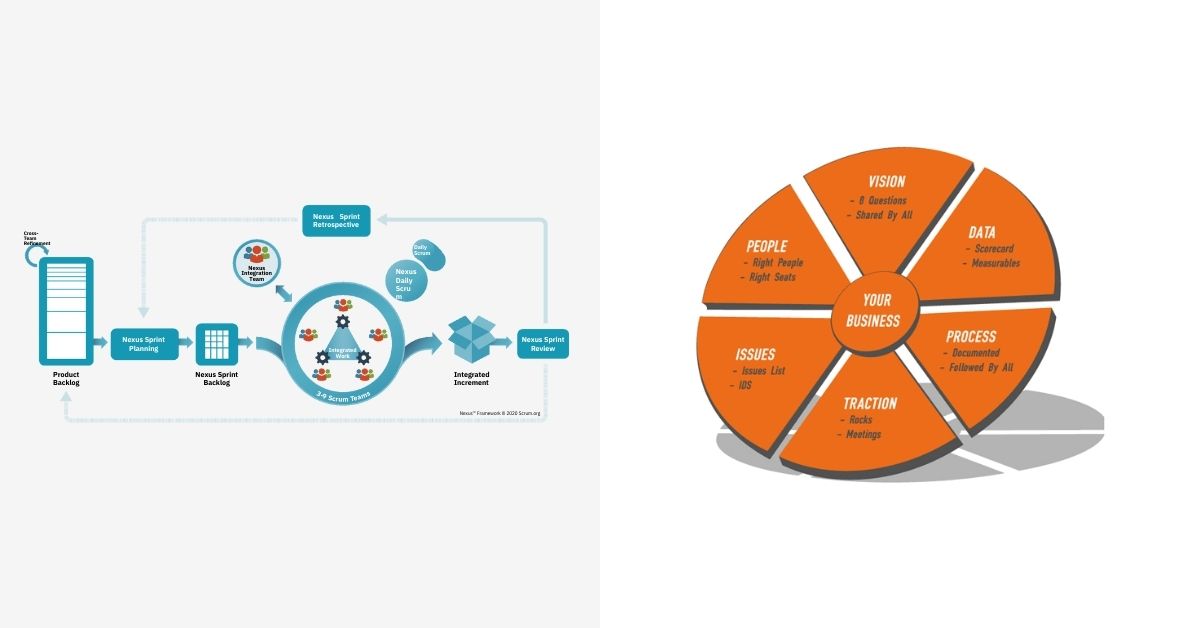
I’m hearing from more and more companies that are using the Entrepreneurial Operating System® (EOS®) and are also looking at or practicing Agile e.g. using Scrum. In discussions with these companies two key questions surface time after time:
The short answer is that Agile and specifically Scrum and EOS®are mostly complementary.
EOS®, as well as Agile approaches, emphasize focus, alignment, a disciplined approach with structured events, artifacts, and policies that attempt to limit the amount of work in process (WIP) in a systematic way, and create better flow with cadence.
Transparency is emphasized in both but is used differently. Both approaches make the work transparent. Agile frameworks like Scrum are designed to deal with VUCA (Volatility, Uncertainty, Complexity, Ambiguity) through empiricism – an aspect which EOS®isn’t explicitly solving for. And in this environment Transparency goes much further – it is not just awareness of what the team and individuals on the team are working on – it is the transparency of whether the product of the team’s work (whether the team is building a product or leading a company) is working and effective.
This would follow the guidelines/mapping described above. In this scenario, a solid Scrum Training/Coaching would be provided to the leadership team in advance of the whole organization and they would become Scrum Practitioners better able to understand as well as drive what’s going on when Scrum/EOS®gets implemented throughout the organization.
If you’re starting to use Scrum in an organization using EOS®or if you’re using Scrum and your organization is in the process of implementing EOS®the list of mappings above will help you create some common language and reduce the conflict/confusion that might arise due to running both EOS®and Scrum at the same time.
The main aspect of EOS®that looks waterfallish is the fact that it runs a quarterly cycle with planning the Rocks for the quarter in advance. I don’t consider that waterfall. And if care is given to making sure that Rocks focus on WHAT rather than HOW and leave enough space to account for variability/learning, I don’t see a problem. It’s very similar to SAFe’s PI-level planning, which is again properly done with an eye towards emerging learning and adjusting course as needed while staying focused on the high-level objectives for the quarter.
Indeed this is a potential area of conflict. But even EOS®makes several mentions of the fact that in order to succeed team members need to prioritize the team’s rocks over their individual ones and support each other. When implementing EOS®there should be an emphasis on accountability towards team rocks rather than individual rocks, even at the leadership team level.
The way to look at this is that EOS®allows teams to micro-manage their work – with the understanding that in a VUCA environment there’ll be lots of surprises and emerging realities that are better addressed quickly. The Integrator role, like the Scrum Master, should lead the team through this discipline of tight-loop inspection and adaptation, rather than feel a need to micromanage work or output. Learning the proper “Leaders who Serve” Scrum Master mindset would be very useful to any EOS leader if he wants to avoid EOS becoming a checklist-based micro-management tool.
As you can see above, as long as you understand the purpose and practices of EOS®, Agile, and Scrum, and are thinking about how they can complement each other, you can definitely use them in tandem. If you want some help in thinking through what this would mean in your context, we’ll be happy to discuss it further.
Credits to Erez Tatcher, AgileSparks CEO who participated in the thinking and writing of this article.
Request for additional information and prices
Subscribe to our newsletter, and stay updated on the latest Agile news and events